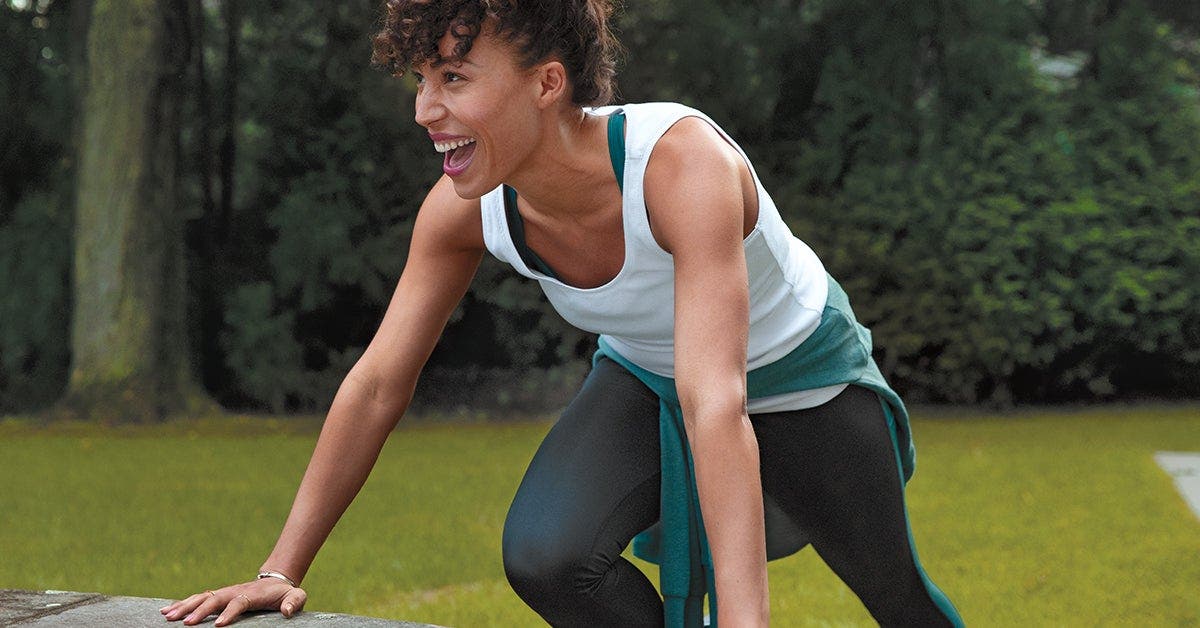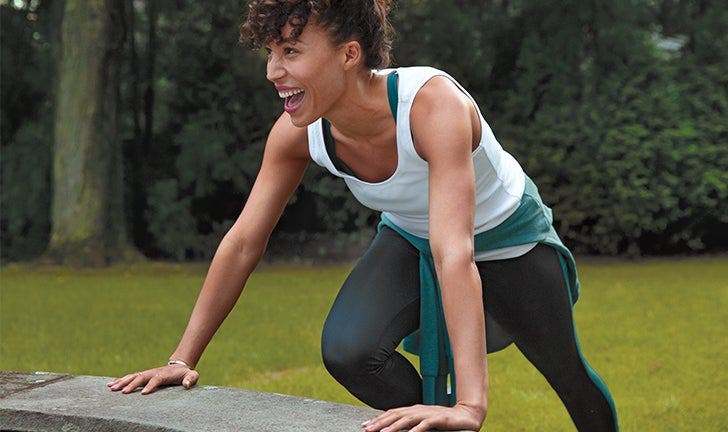How to exercise safely in hot weather


After months of being cooped up inside in the winter many of us can’t wait to get outside for a workout or activity. Taking a run around your neighbourhood, hiking a local trail or kicking a soccer ball around are all great examples of ways to get moving in the summer. However, in many parts of the country, it isn’t uncommon to hit summer highs over 30 degrees celsius, which can make outdoor activities challenging and even dangerous.
Let’s discuss some ways you can prepare and tend to your body so you can safely exercise outdoors in the summer.
Plan ahead
In the summer it’s crucial to plan your outdoor activities around the weather. You may not want to go for a hike in the rain, but you should also focus on the temperature and humidex levels as well.
Our body temperature rises on hot days and also when we exercise, making for a potentially dangerous combination. It’s also harder to cool our bodies down in humid weather as humidity prevents our sweat from evaporating as quickly. So take a look at the weather before planning your outdoor activity. Consider postponing or making adjustments if the weather is going to be too hot or humid. If you need or want to get outside on a hot day, try to plan your activities in the morning or evening. Avoid activities outside between the hours of 10 am and 3 pm when the heat is building.
Hydration is key
Hydration is important every time you do physical activity and frankly it’s important for everyday life in general! However, it’s absolutely essential to stay hydrated if you plan on taking your activities outdoors on a hot summer day.
Focus on drinking water before, during and after exercise on hot days even when you’re not thirsty. The more you exercise and sweat, the more water you need to drink. If you’re wondering what to drink to stay hydrated, remember that water is best. However, if you are planning on exercising in the heat for more than 60 minutes then consider grabbing a sports drink. Moderation is key with sports drinks as they often contain a lot of sugar, despite having helpful potassium and electrolytes. There are also plenty of fruits and vegetables with a high water content that can be a great addition to your diet during hot days.
Dress for success
Wearing the right clothes can make a big difference when it comes to outdoor activities in the summer heat. Ditch the spandex and tight-fitting clothes for loose and flowing tops and shorts. Also, opt for lighter colours to reflect the sun and add visibility if you are running near roads.
Don’t underestimate the impact having cool feet can have on toasty days as well. Sandals are okay for light walking but consider investing in breathable running shoes for more strenuous activities.
Listen to your body
It’s important to realize that some days are just too hot to safely exercise outdoors. Generally, if the outdoor temperature is around 32 degrees Celsius (90 F) you need to take a look at the humidex to evaluate whether it is worth taking your activity outdoors. Environment Canada will also issue heat warnings that will give you a good indication of when it is too hot outdoors. Each region in Canada has different criteria for issuing a heat warning so be sure to check your local weather daily. It’s also important to know the warning signs of heat-related disorders if you plan on exercising in the summer.
Dehydration
We can become dehydrated easily in the summer as our bodies produce more sweat to combat the heat.
- Here are some signs of mild dehydration:
- dizziness or lightheadedness
- dry mouth, lips, and eyes
- headache
- fatigue
- dark coloured urine
Heat exhaustion
Heat exhaustion begins to kick in when our body temperature starts to rise to unsafe levels. This usually occurs after prolonged heat exposure or strenuous exercise in the heat. Without intervention heat exhaustion can lead to heatstroke which can result in hospitalization and even death.
Symptoms of heat exhaustion include:
- Heavy sweating
- Faintness
- Dizziness
- Fatigue
- Weak, rapid pulse
- Low blood pressure upon standing
- Muscle cramps
- Nausea
- Headache
If you experience any of these symptoms while exercising outside, stop imminently, drink water and get to a cool place.
Exercising outdoors in the summer can have a lot of benefits, but if it’s too hot those benefits might not be worth it. The bottom line is that you need to listen to your body, even if you are used to the heat.
